2019 Pole Stamina 180 EN Bike
(discontinued)
| Where To Buy | |||
|---|---|---|---|
Free shipping on orders over $50 (continental U.S. only).
International shipping available. Some exclusions apply. |
|||
Free shipping on orders over $50 (continental U.S. only).
International shipping available. Some exclusions apply. |
|||

Earlier this year, we spent a few months aboard the Pole Machine. We were impressed at just how formidable the bike was as an all-around trail bike, not just on descents. In addition to having built a great bike, the Machine was also Pole’s first in-house CNC machined frame, which had performance advantages and allowed the Finnish brand to refine and design seamlessly from one bike to the next. Well, that “next bike” for Pole is the Stamina. Two travel configurations are available, with 180mm or 140mm setups featuring similar ride feel and geometry, but each slightly tweaked for intended use. With the recent success of Pole’s EWS team inspiring us, we gravitated to the burlier of the two options and have spent a few months rallying a Stamina 180 as a daily driver, beer league enduro racer and general go-to rig for all kinds of shenanigans - we even managed to throw in some laps of Canada’s National Championships DH track. Same, but better? Read on to find out.
Pole Stamina 180 Highlights
- CNC machined frame with 7075 aluminum
- 29” wheels
- 180mm rear travel // 180mm front travel
- Evolink suspension
- Boost rear hub spacing (148mm)
- 3.0” tire clearance
- Low standover height
- 3 bottle mounts
- Limited lifetime warranty
- 33.8 pounds (as tested: Magic Mary SG with Huck Norris front and rear)
- MSRP: complete bikes from ~5200 EUR (excl. VAT), ~6400 EUR (excl. VAT) as tested (+ optional EXT shock cost)
Initial Impressions
The Stamina 180, like all of Pole’s frames, is unique. The raw, machined frame attracts quite a bit of attention. The industrial look may not be everybody’s cup of tea, but it certainly intrigues onlookers. The absence of welds and visibly aggressive geometry were the most frequent talking points, along with the inevitable queries about performance. It seems that most riders are beginning to see the merits of Pole’s preferred angles, but outside-of-the-box thinking can take time for cautious consumers to adopt, so the attention and conversations were always engaging and often animated.

When we unboxed the Stamina 180, we noted two major departures from the Machine that we had tested previously: first, Pole Bicycles has managed to refine the bonding process between the two halves of their frames, which means no more screws. The result is a streamlined, less cluttered frame for the Stamina. It also means fewer nooks and crannies that can collect dirt and debris. The second major difference between the old and the new bike is a new rear end. The Stamina’s rear end is now two separate sides, which bolt independently to an updated Evolink. The updated design actually simplifies maintenance, repairs, and ongoing refinements, in addition to saving weight and increasing stiffness.

Geometry
During our time spent aboard the Machine, we noted how well the bike performed everywhere, not just on fast, steep tracks. As a result, our perception of “ideal” mountain bike geometry shifted to align more closely with what Pole Bicycles has been pushing. Larger brands are moving towards numbers similar to the Stamina, yet Pole remains one of the more progressive brands out there. The Stamina, like all Pole models, is more than just long, low, and slack. Our experience aboard the Machine was all positives and we were happy to see that the geometry remains somewhat consistent with the Stamina 180. All of the numbers and angles that jump off the page in isolation worked harmoniously on the Machine and inspired confidence on descents as well as efficiency on climbs, and indeed it would seem that most of the progress made with the new Stamina 180 concerns construction and design aspects, rather than a new geometry philosophy.

Evolink Suspension
The Evolink design on the Stamina has been tuned to provide exactly what one would expect: stamina. The bike has plenty of antisquat for efficient climbing, a supportive mid-stroke, and generous ramp-up near the end of the travel for heavy impacts. The Stamina’s lower link rotates directly around the bottom bracket, while the upper link sits just above it, which means the majority of the frame’s mass is quite low. This design does mean that the linkage may be susceptible to impacts.



On The Trail
On paper, the Stamina is eerily similar to the Machine that we tested previously. That said, Pole Bicycles designed the Stamina 180 from the ground up. For the sake of comparison between the two, our build kits were nearly identical. The most significant difference between the two builds was the EXT Storia shock on our Stamina, and a less consequential change to the Mavic Deemax wheelset compared to a DT Swiss setup on the Machine.

The 180mm Stamina appears to be a borderline downhill rig, but Pole Bicycles has once again managed to balance all that travel with geometry and suspension kinematics that allow the bike to climb efficiently. While the EXT Storia shock was equipped with a lockout, we never felt the need to rely on it. There is enough anti-squat to prevent too much unwanted suspension movement, plus a great climbing position thanks to a steep seat tube angle and a long rear end. We never needed a significant hip hinge to keep the front end planted on steeper climbs, and we also managed to navigate tight switchbacks comfortably. Even with Magic Mary Super Gravity tires, plus inserts at both ends, the Stamina was not too much of a chore uphill. It climbed much better than any 180mm bike ought to, and while it did require a little more foresight through tight switchbacks, it is more than capable in this regard as well. The Stamina 180 is no wallowing freeride bike and pedals comfortably all day long.


Intermediate and rolling trails are not the Stamina’s forte. Typically, we gravitate towards more nimble, supportive rigs in these trails as they tend to generate speed more easily, but while the Stamina may not generate speed or feel as nimble as other bikes we have ridden, it does hold speed very well on less demanding sections. With 180mm travel on both ends the bike mutes insignificant rocks and roots almost entirely, which is great for holding constant speed, but it also erases small rollers and compressions that could be utilized to generate more speed on a smaller bike. Set up changes could improve performance in intermediate terrain, but we ultimately favored a setup that excelled on faster and rougher trails. The Stamina simply required more energy and rider input than most enduro bikes we have ridden, but it also has more travel than most enduro bikes so that is to be expected. As previously noted the Stamina 180 holds speed easily, so mellower terrain will allow the rider to rest up for the next gnarly bit. A definite plus for racing.

180mm of travel, aggressive geometry, and well-tuned kinematics add up to a confidence-inspiring ride.
To the surprise of nobody, the Stamina is a great descender. 180mm of travel, aggressive geometry, and well-tuned kinematics add up to a confidence-inspiring ride. The same traits that mute intermediate terrain were advantageous on steep, fast, and rough tracks. In addition to local riding in Squamish, we managed a number of laps on Canada’s National Championships DH track to see if the Stamina could hang, and it was right at home. With a wheelbase longer than most downhill bikes, the Stamina held lines extremely well, and railed corners surefootedly. Small bump compliance was excellent, and the coil shock never missed a beat throughout its entire range of travel. Braking does affect rear suspension performance compared to a bike with a high idler, but it is on par with most other bikes we have ridden. Bottom outs were never harsh or distracting, even when we missed lines and opted to bulldoze our way through ugly sections. The Stamina does not favor squaring off corners and jibbing around, it prefers a more efficient approach where it can arc smoothly through corners, carrying speed generally reserved for downhill bikes. Our final suspension setting was 2 clicks of low speed, 2 clicks of high speed, and rebound wide open. Given the option, we would have like to run even faster rebound on the Stamina as we found that the rear end occasionally packed in through high frequency chatter.

At the end of the day, our time aboard the Stamina had us wondering if the Machine needed to remain in Pole’s lineup. The Stamina does everything just as well, giving up very little on climbing sections, and is simpler to maintain. Be that as it may, we are certainly thankful to be bike riders living in an era where a bike as big as the Stamina is referred to as “efficient”.
Build Kits and Pricing
Pole is offering three build kit options, plus two frame only choices for the Stamina. We rode the EN build, with the EXT Storia LOK shock as an optional extra, along with Huck Norris tire inserts. Every part on the build is perfectly suited for a bike as capable as the Stamina except the tires. Maxxis Double Down or Downhill casings are much more appropriate than the EXO or EXO+ options featured here. Within a couple of rides, we had to swap to a more durable option, which we ran for the remainder of the test. The Stamina 180 is fast enough that we also needed the stiffer sidewall support of a heavier tire. The rest of the parts held up well and required little to no maintenance. The Mavic Deemax Pro wheelset, in combination with Huck Norris inserts and Schwalbe Magic Mary SG tires was especially impressive. Even after a few months’ abuse and a weekend spent lapping a downhill racecourse, the wheels are solid, true, and roll smooth.

Things That Could Be Improved
Pole Bicycles has clearly taken a step forward with the Stamina, but a couple of items remain imperfect. Weatherproofing has improved, but dirt still managed to make its way into the lower pivots more quickly than we would have liked. The pivots hang relatively low and see more dirt and debris than some other designs where pivots are located higher or farther away from the bottom bracket. The same low-hanging pivot is extremely tight to the chain ring, which resulted in significant chain slap during our test. The strut on the rear end also makes quite a bit of noise. Mastic Tape and Velcro are short-term solutions to curb the noise and minimize cosmetic damage, but it would be great if Pole designed something a little more refined so consumers do not have to do this themselves.



We had the opportunity to ride and chat with the people at Pole during Crankworx Whistler, who noted our concerns and informed us that they were already working towards solutions. In-house manufacturing means that any updates can occur quickly, so we would expect running changes to the frames to be introduced before too long.
Long Term Durability
Pole Bicycles’ unique frame construction won us over with our initial test of the Machine. The process seems to have been refined with the Stamina, which has taken more punishment than just about any trail bike we have ridden. After a ton of miles, chairlift laps, and general neglect the Stamina is still going strong. A creaking frame was an irritant from time to time, but it had absolutely no impact on the bike’s performance nor reliability. Mastic Tape or Velcro can be used to prevent cosmetic damage caused by the chain, but we hope to see integrated protection or an update that eliminates the issue at some point.
What’s The Bottom Line?
Pole Bicycles has earned quite a bit of praise recently. Justifiably so. Progressive geometry, frame construction, and great performance. The geometry they have championed since their inception is becoming more common, and frequent refinements to their own designs seem to be moving Pole increasingly into the mainstream. Sure, the Stamina is a big bike on paper. In reality we suppose it is - however, a few millimeters or degrees here and there add up to a significantly improved riding position, more confidence, and simply a better riding experience with very little compromise. The Stamina 180 is an extremely capable, shockingly versatile trail bike, park lapper, and enduro weapon, perfectly suited to riders who are all about the business at hand as opposed to jibbing about.
Check out https://polebicycles.com/ for more information.
Vital MTB Rating
- Climbing – 4 Stars
- Descending – 5 Stars
- Fun Factor – 3.5 Stars
- Value – 4 Stars
- Overall Impression – 4 Stars
About The Reviewer
Joel Harwood – Age: 36 // Years Riding MTB: 20+ // Height: 5’11” (1.80m) // Weight: 185-pounds (83.9kg)
Joel’s unique coaching background and willingness to tinker with products bring an objective perspective to testing. He dabbles in all types of racing, but is happiest simply exploring the limitless trail networks surrounding his home of Squamish, BC. Attention to detail, time in the saddle, and an aggressive riding style make Joel a rider that demands the most from his products while exposing any shortcomings.
Photos By: Jessie McAuley
Specifications
Rear: Maxxis Minion DHR II 29x2.3", 3C, EXO, TR
Paint, anodize and decals: 1 year
Fork and swing arms: 5 year
External cable routing with stealth dropper post routing
Integrated multitool from OneUp Components
Integrated bashguard from OneUp Components
| Where To Buy | |||
|---|---|---|---|
Free shipping on orders over $50 (continental U.S. only).
International shipping available. Some exclusions apply. |
|||
Free shipping on orders over $50 (continental U.S. only).
International shipping available. Some exclusions apply. |
|||






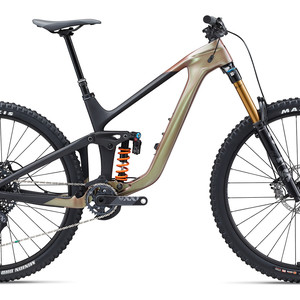
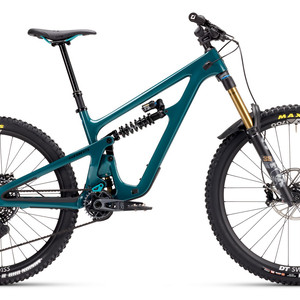
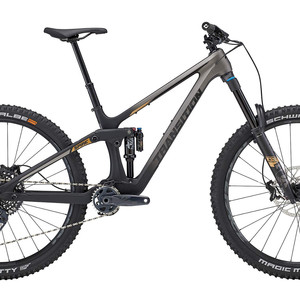


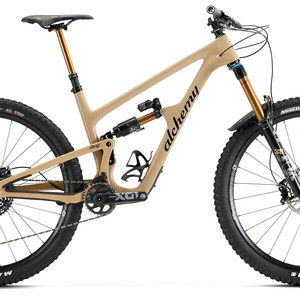
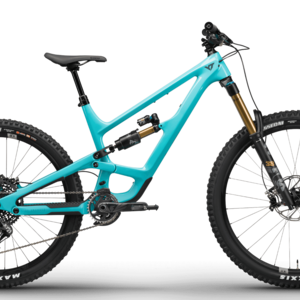







33 comments
Post a reply to: BIKE TEST: 180mm-travel Pole Stamina